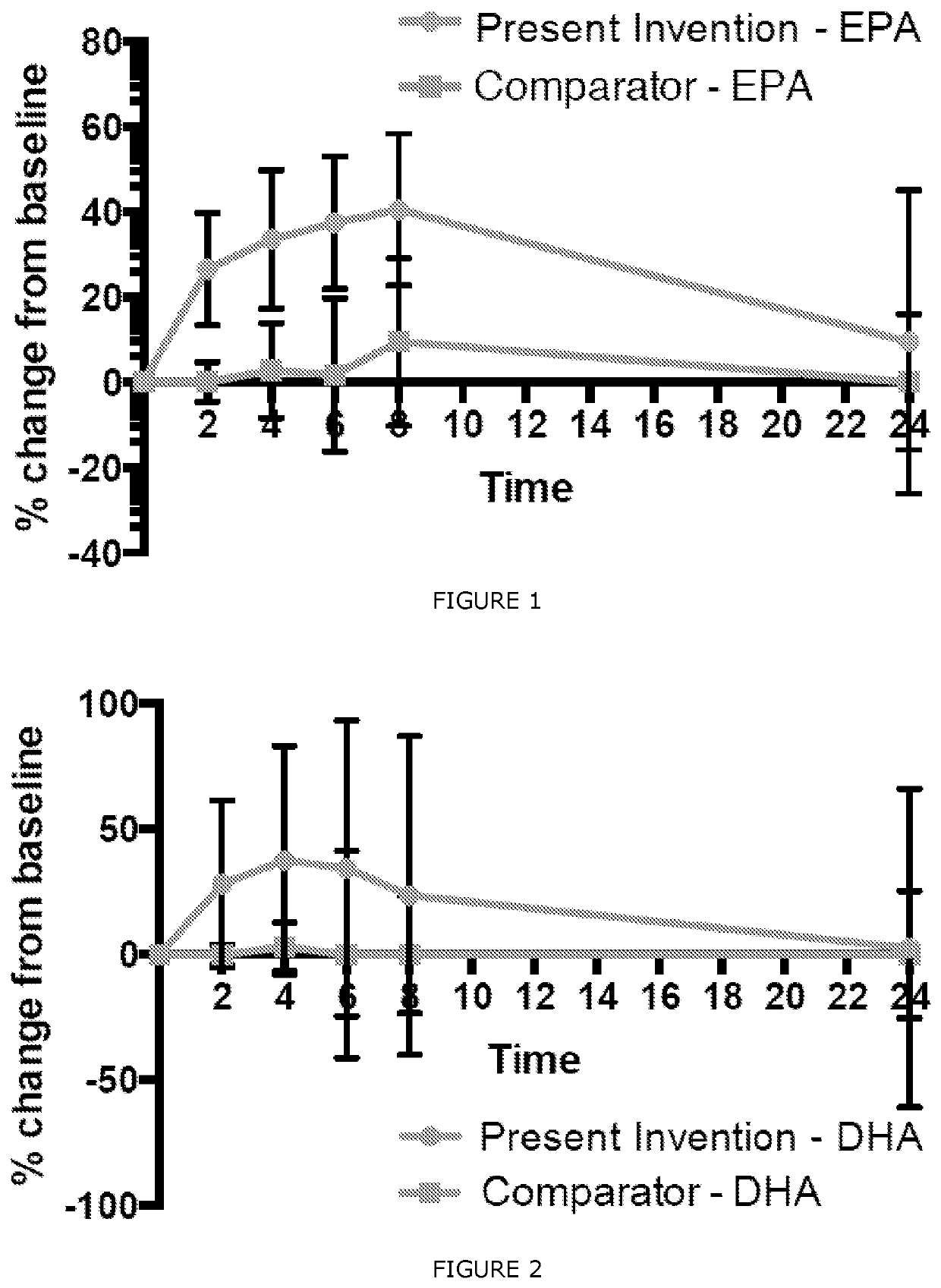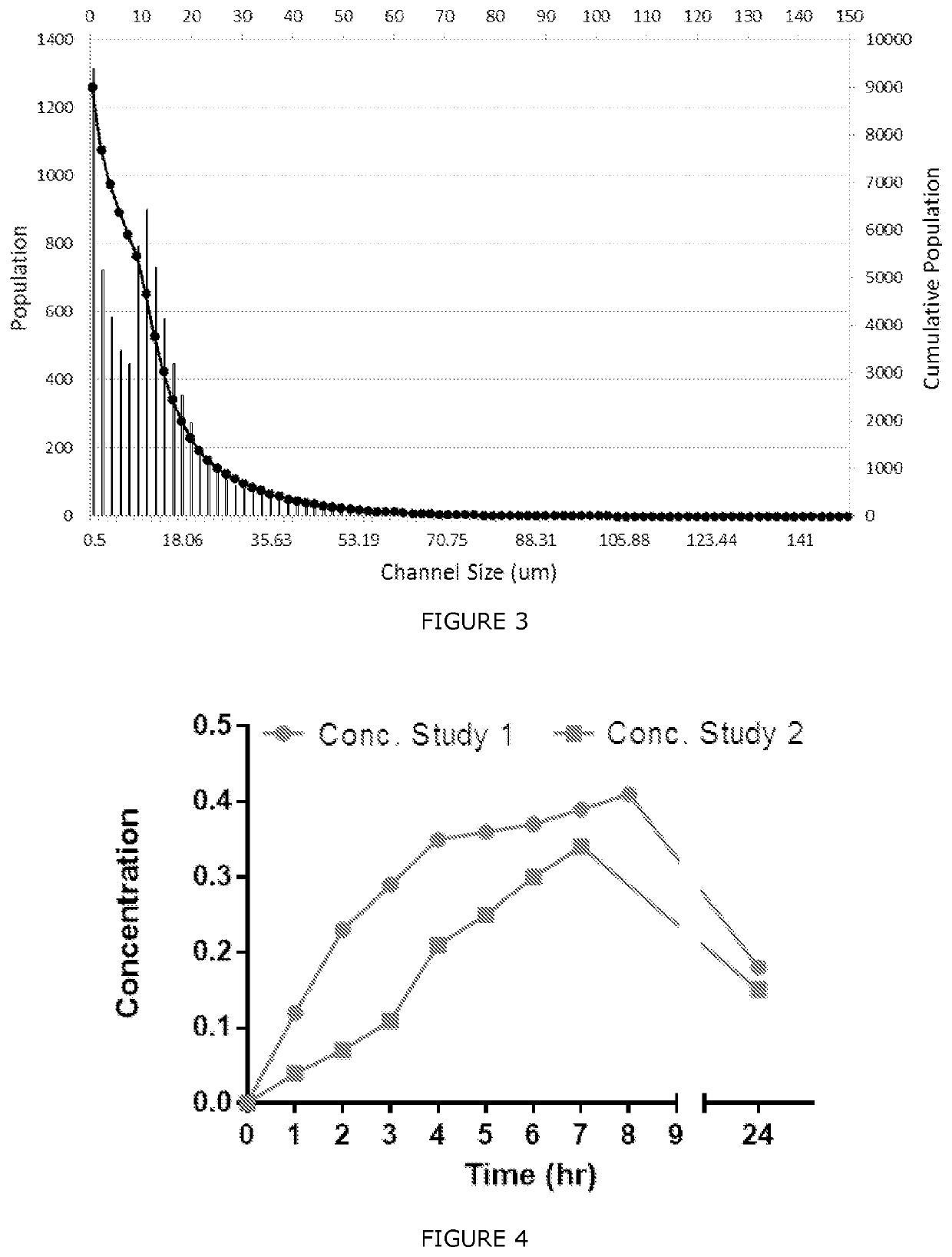Omega-3 compositions and methods relating thereto
a technology of omega-3 and composition, which is applied in the field of water dispersible compositions of bioactive lipophilic compounds, can solve the problems of difficult efficient administration of lipophilic compounds to patients, poor bioavailability of lipophilic compounds, and inability to penetrate the water film of fat soluble substances such as fatty acids, so as to promote the formation of micelles, limit the scope of invention, and facilitate the effect of absorbing by the body
- Summary
- Abstract
- Description
- Claims
- Application Information
AI Technical Summary
Benefits of technology
Problems solved by technology
Method used
Image
Examples
Embodiment Construction
[0032]An aspect of the present invention provides for a water-dispersible composition comprising at least one source of Omega-3 and at least one micelle-promoting agent comprising one or more of a carrier oil, a solvent, an emulsifier and an antioxidant. In an embodiment of the present invention, the water-dispersible composition provides an advantageous delivery of Omega-3 upon ingestion, resulting in greater bioavailability of the Omega-3 to the body of the consumer. In an embodiment, this may allow for a greater percentage of the consumed Omega-3 to be absorbed by the body, which may allow for less total Omega-3 to need to be consumed in order to provide a beneficial effect.
[0033]In an embodiment of the present invention, the water-dispersible composition promotes at least a twofold increase in bioavailability of the Omega-3 source. This may mean that at least twice as much Omega-3 will be taken up by the body when delivered through the water-dispersible composition of an embodim...
PUM
| Property | Measurement | Unit |
|---|---|---|
| mean population diameter | aaaaa | aaaaa |
| mean population diameter | aaaaa | aaaaa |
| mean population diameter | aaaaa | aaaaa |
Abstract
Description
Claims
Application Information
 Login to View More
Login to View More - R&D
- Intellectual Property
- Life Sciences
- Materials
- Tech Scout
- Unparalleled Data Quality
- Higher Quality Content
- 60% Fewer Hallucinations
Browse by: Latest US Patents, China's latest patents, Technical Efficacy Thesaurus, Application Domain, Technology Topic, Popular Technical Reports.
© 2025 PatSnap. All rights reserved.Legal|Privacy policy|Modern Slavery Act Transparency Statement|Sitemap|About US| Contact US: help@patsnap.com


